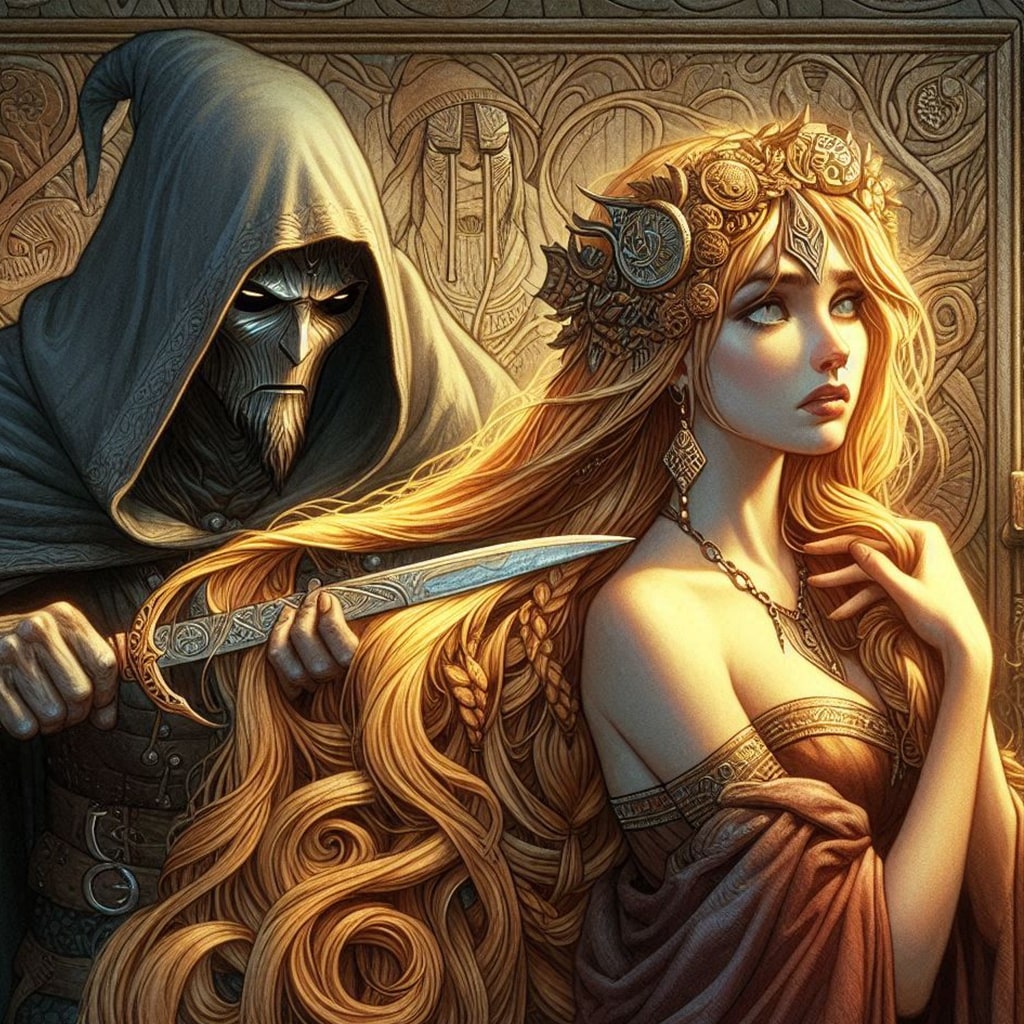The Celtic Cross: Influence of Celtic Christianity on Norse Paganism
The Celtic cross, with its distinctive ring intersecting the arms of a traditional Christian cross, is a symbol rich in history and cultural significance. Its origins are a subject of both scholarly research and popular legend, reflecting the deep intertwining of Christian and Celtic traditions and its eventual migration to western parts of Scandinavia. The cross is widely recognized as a powerful emblem of both faith and heritage, particularly in Ireland, Scotland, and other parts of Celtic world.

Historical Context and Early Christian Influence
The Celtic cross likely emerged during the early medieval period, around the 7th century, a time when Christianity was spreading through the Celtic lands of Ireland and Britain. Missionaries, such as St. Patrick in Ireland, played a crucial role in this religious transformation. The introduction of Christianity brought with it new forms of religious art and architecture, including the construction of monasteries and the carving of high crosses.
High crosses, often erected in monastic sites or churchyards, served both as markers and as teaching tools, their surfaces intricately carved with biblical scenes, knotwork, and other decorative motifs. The ring that characterizes the Celtic cross may have been introduced to reinforce the structure of these large stone monuments, helping to support the arms of the cross. Over time, this practical feature became a defining aesthetic element.
Symbolism and Mythological Connections
The circular ring, or nimbus, of the Celtic cross has various interpretations and symbolic meanings. In Christian iconography, the circle represents eternity and the endless nature of God’s love, as well as the halo of Christ. However, there are also theories that the circle has roots in pre-Christian Celtic symbolism.
Celtic culture revered the sun and nature, and some scholars believe the ring could symbolize the sun or the sun wheel widely represented in both Celtic and Norse cultures, merging pre-Christian and Christian symbols into one cohesive emblem. This blending of symbols facilitated the acceptance of Christianity among the Celtic and Norse people, who could see their own cultural motifs reflected in their new religious iconography.
Intersecting Symbolisms and Cultural Exchanges
While the Celtic cross and Norse mysticism originate from different cultural backgrounds—Christian Celtic and Pagan Norse—they represent the broader context of cultural and religious interactions in early medieval Europe. The Viking Age (circa 793–1066 AD) saw Norse Vikings frequently interacting with Celtic societies in Ireland, Scotland, and other regions. These encounters often led to exchanges of goods, ideas, and symbols.
One notable example is the Norse adoption of the cross in some contexts, possibly influenced by interactions with Christian Celts. Viking raids on monasteries and settlements sometimes resulted in the Vikings adopting certain elements of Christian symbolism, either through direct exposure or as part of their eventual conversion to Christianity. Similarly, the presence of Norse motifs, such as intertwined animal designs, influenced Celtic art during this period.
One of the artifacts resulting from the fusion of Celtic Christianity and Norse paganism is the Icelandic Wolf Cross, also known as the Wolf's Hook or Úlfhéðnar Cross. It features a cross with extensions resembling wolf's ears or hooks, often depicted with intertwined motifs and runic inscriptions. The symbol is linked to the Úlfhéðnar, fierce Viking warriors devoted to Odin and said to possess wolf-like qualities. Today, the Icelandic Wolf Cross represents strength, courage, and the enduring spirit of Icelandic and Norse traditions.
Odin and the Christian Cross: An Unexpected Convergence
In the broader context of medieval symbolism, Odin and the Christian cross occasionally intersect in ways that reflect the syncretism of the era. For instance, runestones from the Viking Age often display a mix of pagan and Christian symbols, highlighting the transitional period as Norse societies gradually embraced Christianity. Some scholars suggest that Odin’s mythic sacrifice on the World Tree bears a resemblance to the Christian narrative of Christ’s crucifixion, symbolizing a deeper, albeit complex, spiritual parallel.
Additionally, the blending of pagan and Christian motifs can be seen in the artistic and cultural artifacts of the time. This syncretism is evident in the way symbols such as the cross were incorporated into Norse art and vice versa. The Celtic cross, with its combination of a circle and a cross, may have resonated with Norse artists and thinkers familiar with their own rich tapestry of symbols and myths.
Notably, the Birka and Aunslev crucifixes are significant artifacts from the Viking Age, showcasing the blend of Norse and Christian cultures. The Birka crucifix, discovered in Sweden, is notable for its intricate design and is one of the earliest representations of Christ in Scandinavia. It illustrates the early spread of Christianity among the Vikings and the syncretism of religious symbols. Similarly, the Aunslev crucifix, found in Denmark, exemplifies the transition from paganism to Christianity in the region.
These crucifixes are not just religious symbols but also important historical artifacts that provide insight into the cultural and religious transformations in Viking society during the 9th and 10th centuries. Their craftsmanship reflects both local artistic traditions and the influence of Christian iconography, marking a pivotal moment in Scandinavian history.

The Spread and Evolution of the Celtic Cross
As the use of the Celtic cross spread, its design evolved. The earliest examples are relatively simple, but by the 9th and 10th centuries, they became more elaborate, adorned with intricate carvings of knotwork, interlace patterns, and scenes from the Bible. These crosses often served as focal points for religious gatherings and as markers for sacred spaces.
The Celtic cross experienced a revival in the 19th century during the Celtic Revival, a movement that sought to celebrate and preserve Celtic culture and heritage. This period saw a renewed interest in traditional Celtic art and symbols, leading to the widespread adoption of the Celtic cross in various forms, from gravestones to jewelry.
Today, the Celtic cross is a potent symbol of both faith and cultural identity. It is especially prominent in Ireland, where it is a national symbol, and among the Irish diaspora worldwide. The cross continues to be a popular motif in art, architecture, and personal adornment, reflecting its enduring appeal and the rich tapestry of meanings it embodies.
In essence, the Celtic cross is a testament to the deep connections between Christianity and Celtic tradition, symbolizing a harmonious blend of faith, art, and cultural identity. Its origins, steeped in history and mythology, continue to inspire and resonate with people around the world, making it a timeless emblem of heritage and belief.


